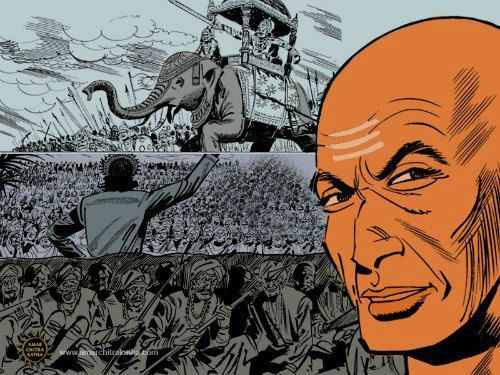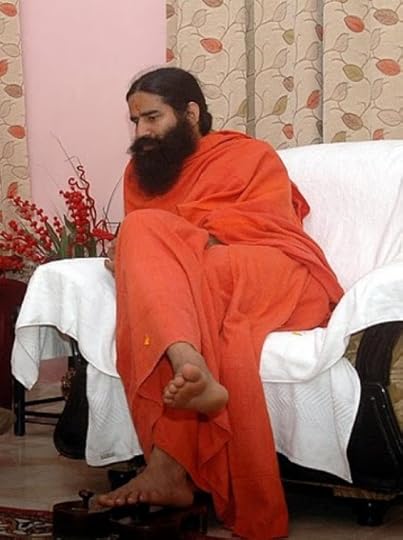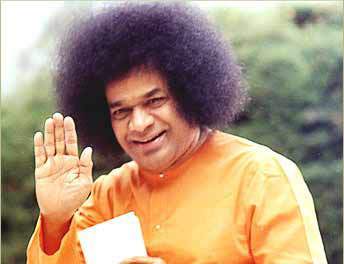While researching for my novel, The Prince of Patliputra, Arthashastra by Kautilya was the first book that I turned to. It is claimed that this book was written during those times (i.e. 3rd century BC) and I thought it would give me a good feel of how the world was,during those times.
Arthashastra is a great book and much has been said and written about it from times immemorial. I do not want te dwell into the analysis of the book. Today, I merely want to focus on Kautilya’s advice in it about the intelligence(spy) system of a kingdom.
Spy system played a very important role in the Maurya Empire. Kautilya in his treatise has advised exactly, the kind of spies that should be recruited and groomed. He has even divided them into five categories, each playing a different role. Much to my surprise, in the current political scenario of our country, I found strikingly similar figures that would fit right into the mould that Kautilya has advised.
Now, these similarities must be taken in a lighter vein and I hope that all it will breed is a laughter or a smile. With that being said, let us begin.

These were 5 Types of Spies that were appointed in the Mauryan Empire as drafted by Kautilya/Chanakya in The Arthashastra:
Spy 1] – Fraudulent Disciple –Student (kápatikachhátra)According to Chanakya, the chief of intelligence services should appoint students (especially those involved in intellectual activity, teaching or in research activity) from a university. These intellectual students must be argumentative, brash and skilled enough to provoke others. Sometimes, these students should deliberately cause an uprising in the university to judge the mood of the students of the institution about the ruler King.

Spy 2 – Ascetics – Recluse (Udásthita)Ascetics who were known for their knowledge and intelligence were favored for the intelligence activity. Once they were chosen, they would then form a network of spies. The chief of this unit was given ample land and resources from the state so that he could carry out their activity without any issues.

Spy 3 – Retired Soldiers – A Householder (Grihapaitika)The third type of spies was the veterans of the army who now lived a civilian’s life. These spies formed their own network of informers who could give them information from time to time. These informants were common people of the village who would turn to a veteran for advice and support.

Spy 4 – Unsuccessful Trader/Businessman – A merchant (Vaidehaka)Chanakya’s spies in the 4th category involved not so successful merchants and traders – These spies not only utilized their business travel to collect information about various things (including the discontent of the businessmen in their territory and outside), but also made a network of informers who could give them the required information. The King’s ministers should recruit such failed businessmen and should fund them and use them to be updated about the mood of the merchant class. However, the merchants are in general, an untrustworthy breed, and if such a spy is to turn hostile, he must be exiled immediately.

Spy 5 – Religious LeadersThe 5th type were basically religious monks made by the state.Their first job was to build an ashram outside the major urban areas. As mentioned, the objective of these ashrams was not spirituality but political reasons. These ashrams were built only to attract the local rich populace, so that they could influence them and even try to diminish the respect of any local religious leaders they had. The working of these spies was very dangerous but in the interest of the state. They had a network of informers who would tell them, both the strength and weakness of citizens. These secrets were then used for fortune-telling via palmistry. The religious leader would then predict calamity, accidents, mysterious deaths (obviously assassinations planned by the state themselves). He would even predict government awards and honors to specific person, which obviously were discussed between him, King and the ministers beforehand.

All these five types of spies were paid for their work in cash and comforts. However, the appointment was done mainly on the basis of their pure character and foresightedness.
The Arthashastra contains many articles of such type and is a must read!
Note: Oops!!! I think I used the wrong images!! Or didn’t I??? :p
Food for thought!!
Do read my book The Prince of Patliputra for a leap into the world of Mauryan politics in the times of Ashoka the great. It’s book trailer can be viewed here.
Do share this post if you liked it and give your valuable feed back. Cheers! Have a great day.


 newest »
newest »
 newest »
newest »
 Brilliant write up Shreyas and very true indeed!! ... Do share some more articles like these.
Brilliant write up Shreyas and very true indeed!! ... Do share some more articles like these.












